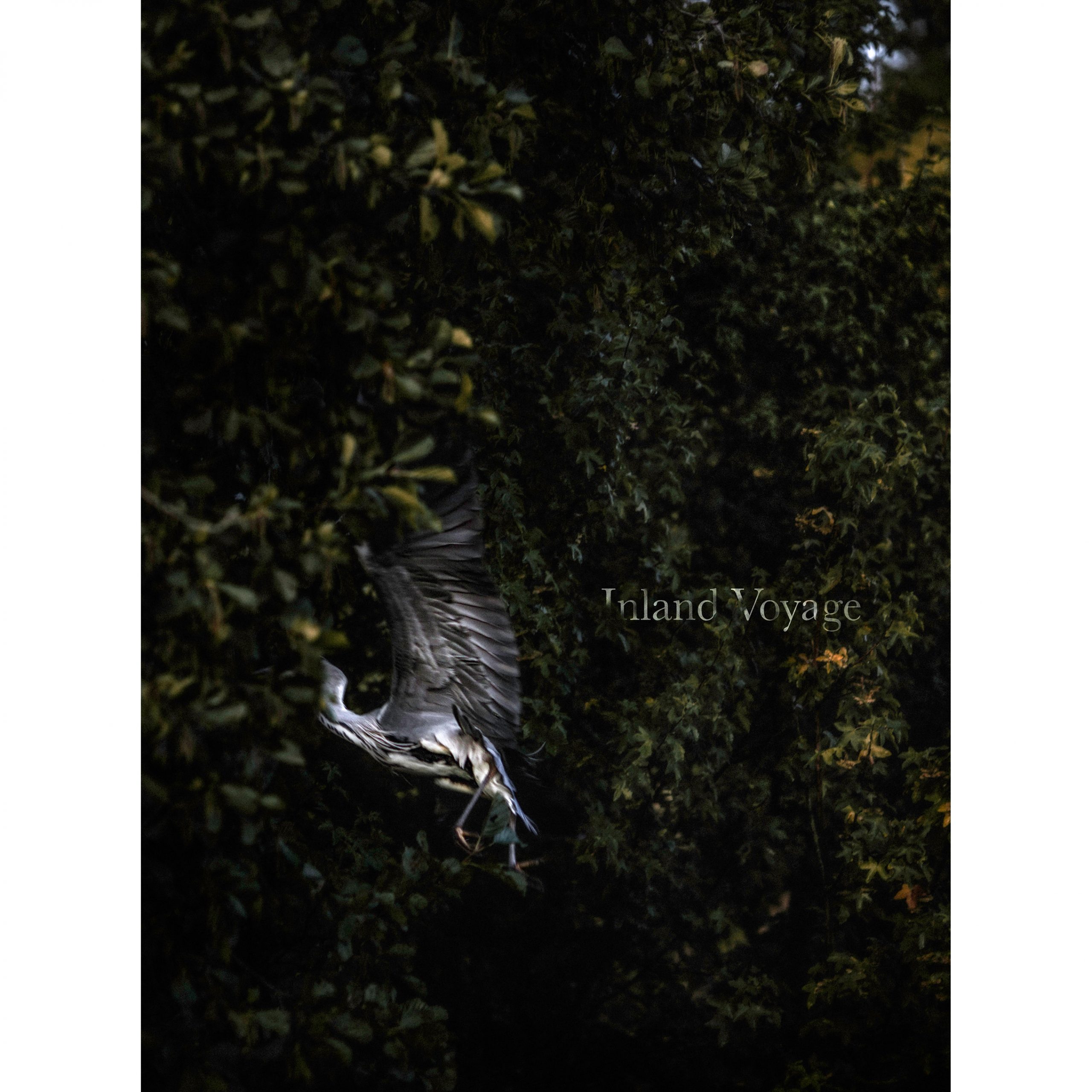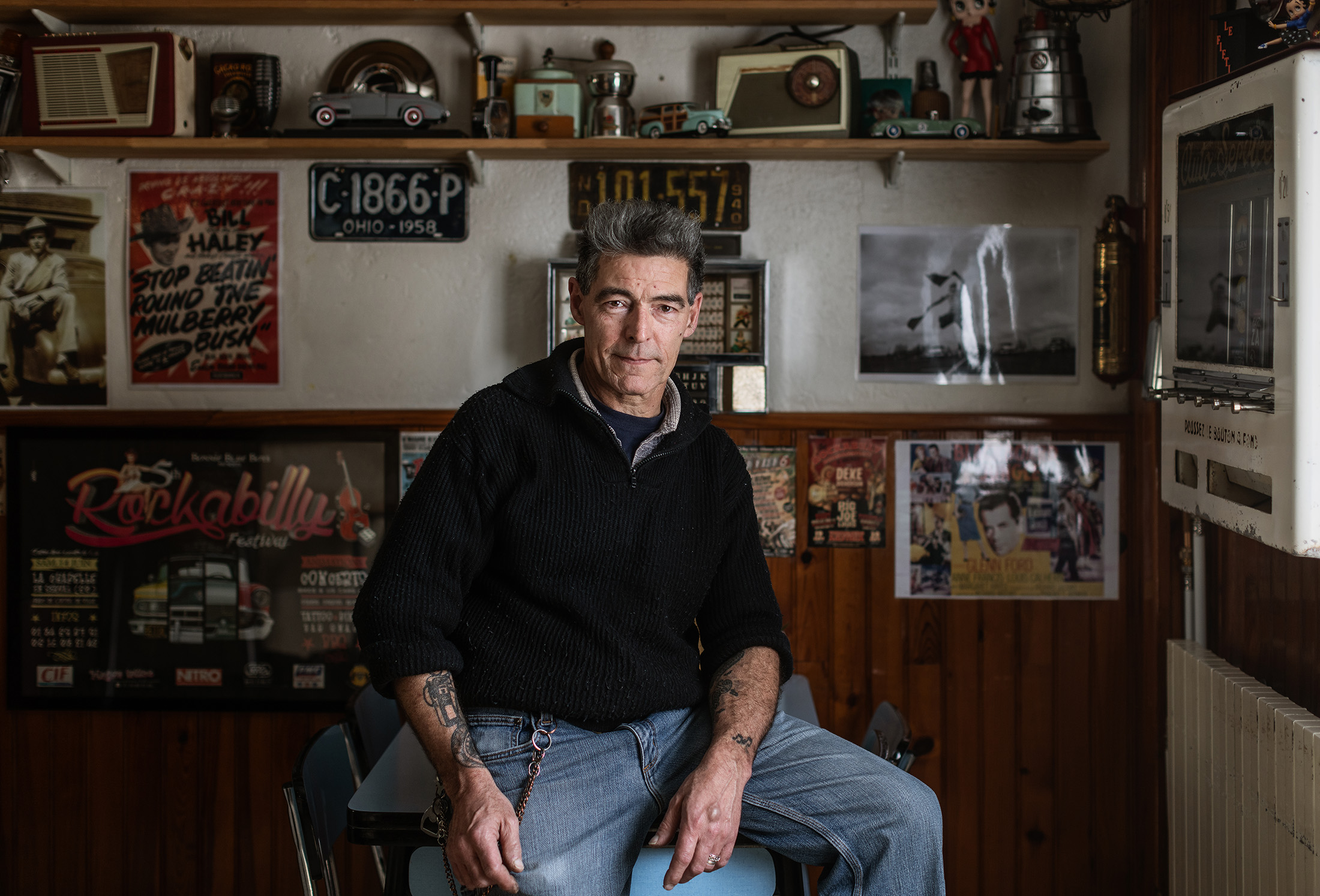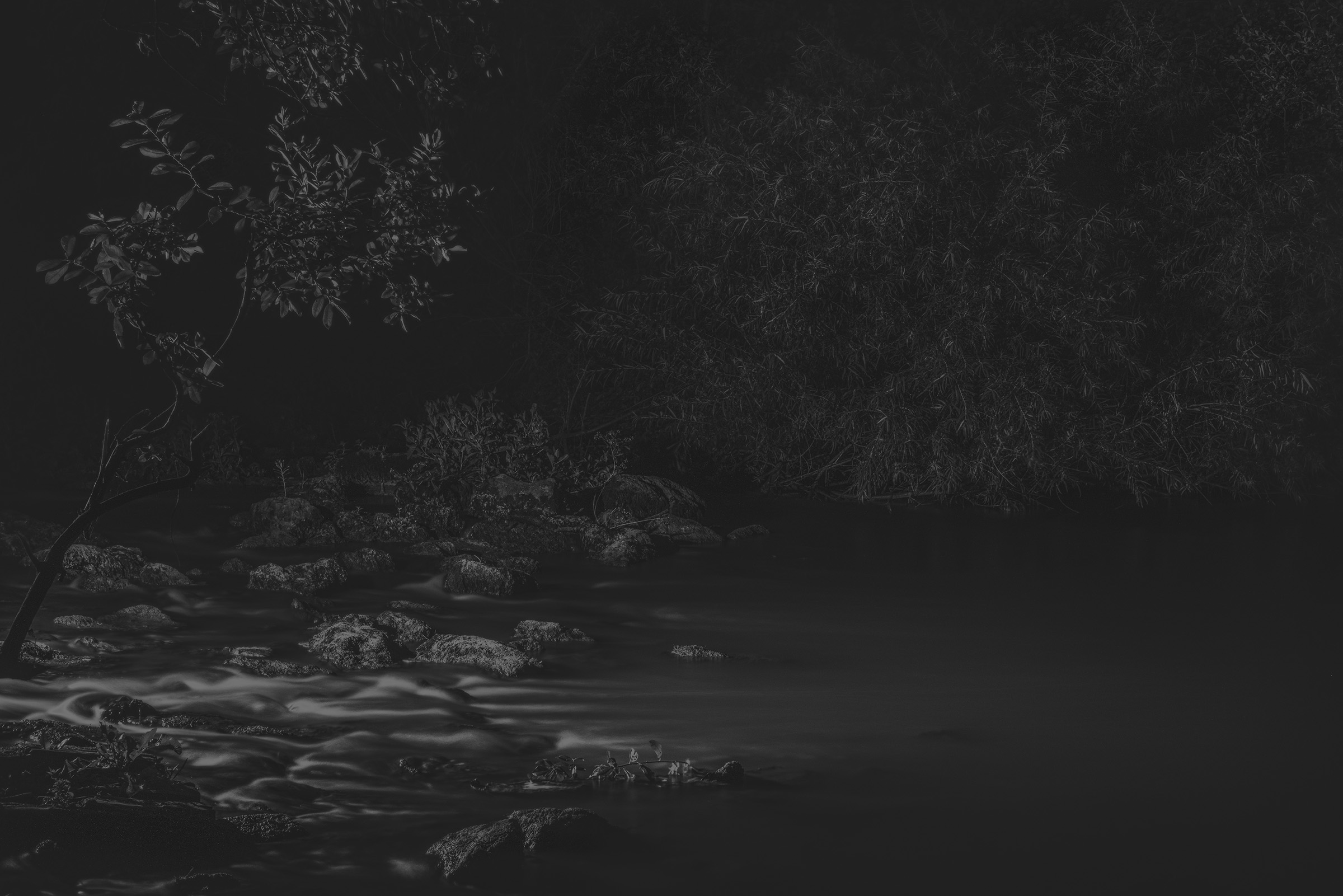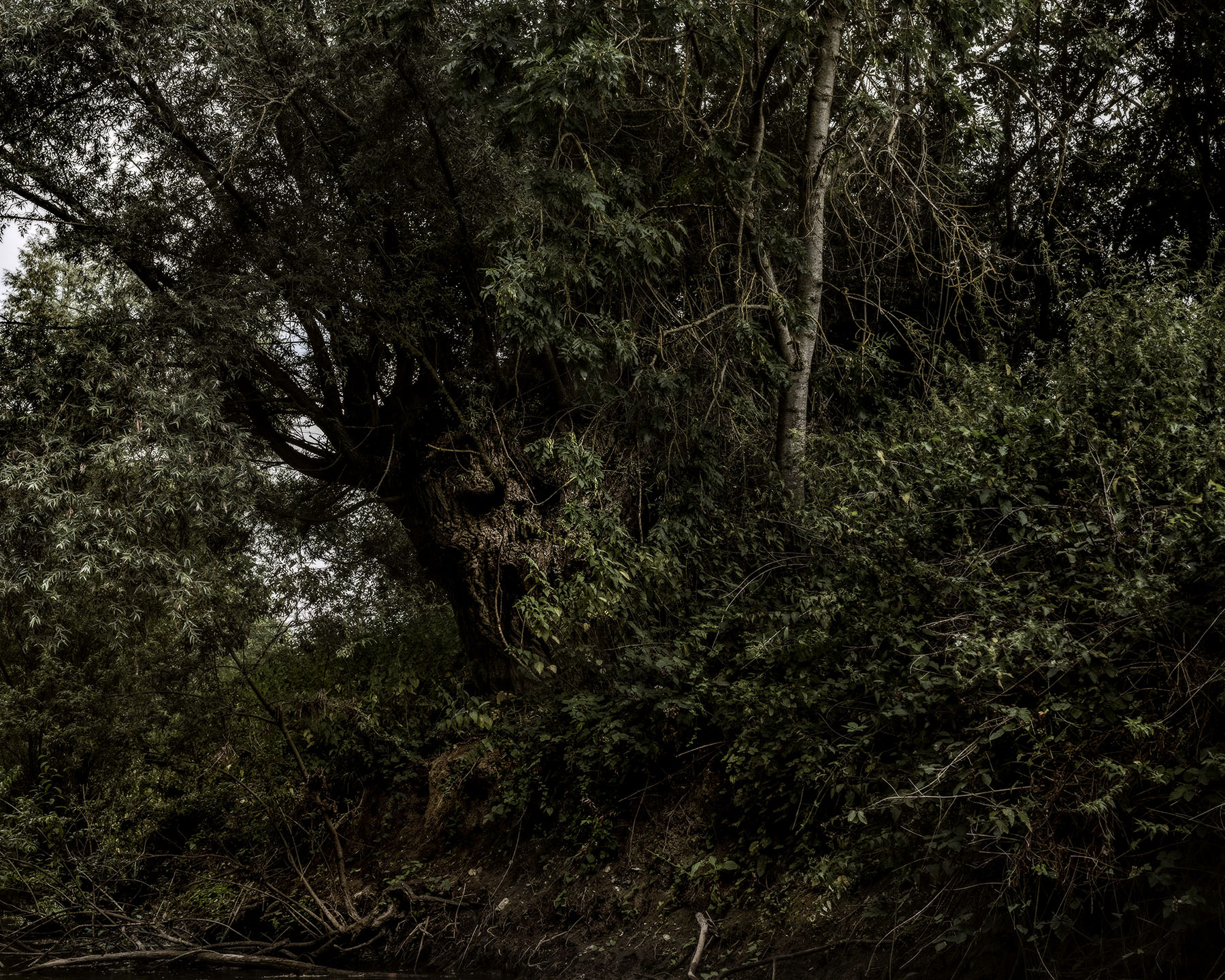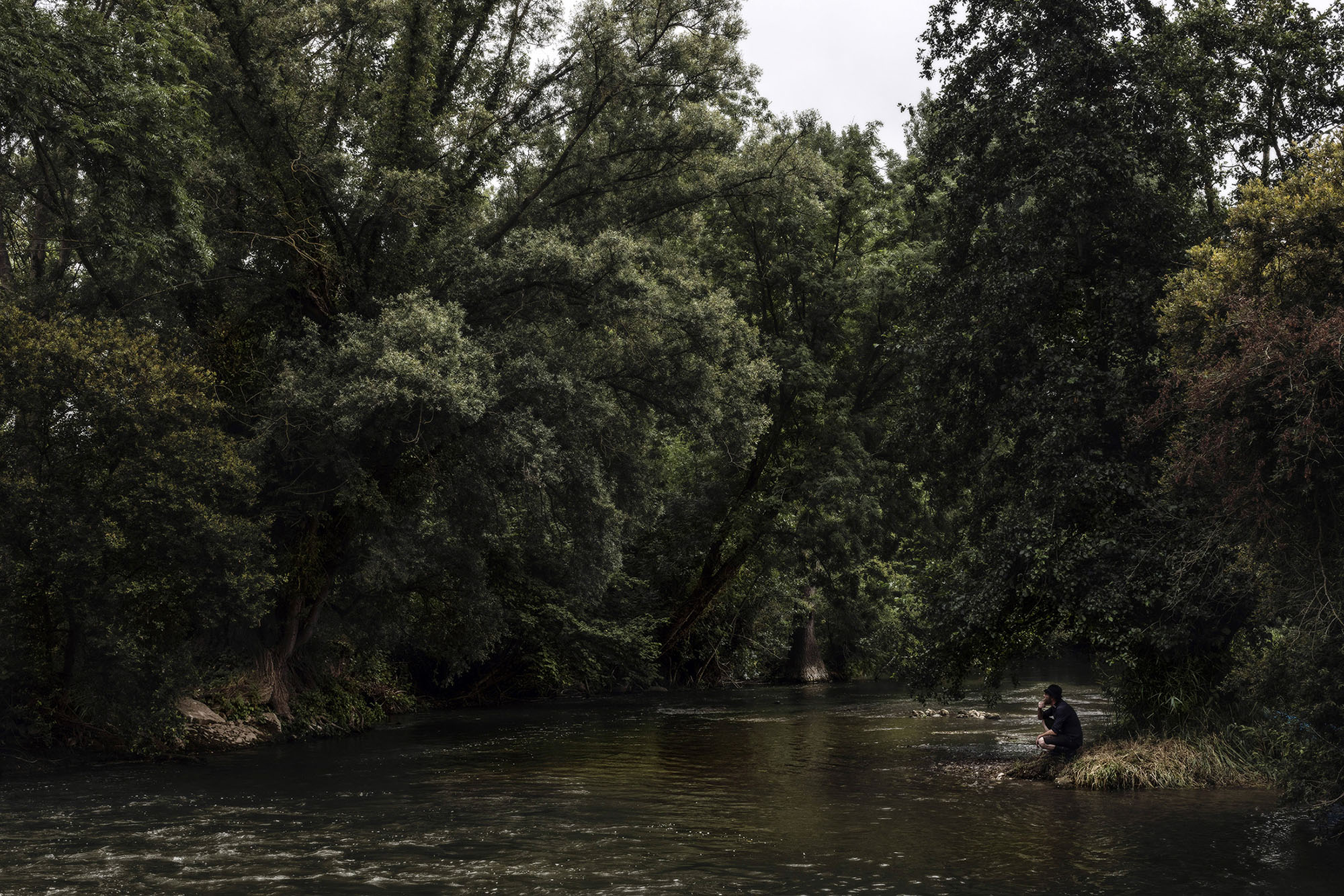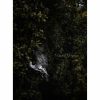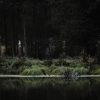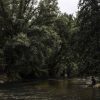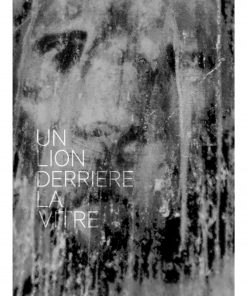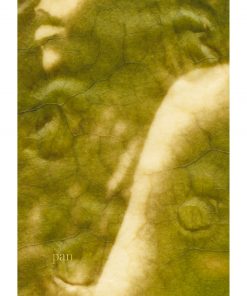This website uses cookies so that we can provide you with the best user experience possible. Cookie information is stored in your browser and performs functions such as recognising you when you return to our website and helping our team to understand which sections of the website you find most interesting and useful.
INLAND VOYAGE
Quentin Pruvost, Robert Louis Stevenson
Afterwords : Hervé Leroy et Jean-Philippe Mailliez
Inland Voyage is a work of openness, a quest into the unknown. It explores one of the works of Scottish writer Robert Louis Stevenson, his short travelogue An Inland Voyage written in 1878, which recounts with humor and modernity the canoe journey of Stevenson and his friend Walter Grindlay Simpson on the rivers and canals of the Sambre and the Oise from Anvers to Pontoise.
The first pages of the book make us slide gently over the water, until we enter a world in balance between dream and reality. The images of photographer Quentin Pruvost, following the footsteps of the writer, weave between light and shadow. They reveal astonishing characters, memories of past dreams and possible adventures within the landscapes, the abundant vegetation, the human constructions along the banks of the Sambre and the Oise.
The reader is carried away by the current, carried away by dreams, suspended like a tightrope walker between the tangible and the invisible.
In the middle of the book, dream time appears. The images of the rivers slide towards the tale. There are black and white photographs with silver strokes.
In the third part, the reader discovers mysterious apparitions and pareidolia captured by Quentin Pruvost, as if he rubbed shoulders with Stevenson's creative spirit between dreams and the physical world. At the end of such journey, the reader, more sensitive to the signs sent through dreams, will perhaps have changed a little...
Inland Voyage ends with two afterwords: one signed by the writer and journalist Hervé Leroy establishes a dialogue between the eye and the verb , the other written by the journalist Jean-Philippe Mailliez takes us to the heart of the adventurous life of storyteller Stevenson.
Technical features
- Release date : 8 November 2022
- Photographs : Quentin Pruvost
- Text excerpts (An Inland Voyage 1878) : Robert Louis Stevenson
- Afterwords : Hervé Leroy et Jean-Philippe Mailliez
- Graphic Design : Arnaud Pavie, Quentin Pruvost et Eric Le Brun
- Book format : 21 x 27,5 cm / Weight : 0,700kg
- 128 pages – 65 photographs (55 coloured, 10 black and white)
- Bilingual version: french, english
- English translation (afterwords): Harriet Thurgood
- French translation (text excerpts): Laurène Becquart
- Proofreading: Sandrine Harbonnier
- Print run: 900 copies
- Cover printed on Symbol Tatami Ivory 170gr and endpapers on Sirio Rough Royal Green 115gr
- CMYK photographs on Symbol Tatami Ivory 115gr and black and white photographs printed in silver pantone on Sirio Color Black 115gr
- Text excerpts on Sirio Color Black 115gr
- Afterwords on Munken Print White 115gr
- Softcover sewn glued spine
- ISBN : 9791095118237
- Public price : 39 €
Press and booksellers' comments
Click to access the press kit.
Excerpts from newspapers articles and booksellers' comments
« French photographer Quentin Pruvost chose to explore the work of Scottish writer and traveler Robert Louis Stevenson (1850-1894). The latter made, at the age of 25, a canoe trip on the rivers of the North, from Antwerp to Pontoise, an experience that he will translate with humor and modernity in the book Inland Voyage. Accompanied by this story, the photographer begins his journey along the river and the canals of the Sambre to relive this initiatory journey.
The landscapes are also those of his childhood, thus awakening his own memories... From the first pages, we discover mysterious images where it is sometimes difficult to draw the dividing line between water and vegetation. The images confuse reality and illusion. The journey continues with a few portraits here and there that bring tangibility to those silent landscapes. »
Ericka Weidmann in Réponses Photo
« There’s lots of rain and the pair get soaked to the skin, a dampness caught in the chill of Pruvost’s fluvial illustrations, Stevenson’s trunks of hedgerow elms are caught in all their unworldly glory. “Trees are the most civil society.” You can near smell the sweetness of Pruvost’s forest photography.
As for the river we flow, looking at these shots, along with Arethusa and Cigarette, via a gentle pull of “enchanting purity”. One suspects Pruvost, like Stevenson, hates cynicism – both are unapologetically romantic. Their river workers, the poorer classes, are portrayed as being “much more charitably disposed than their superiors in wealth.”
John Quin in The National
Vegetation is mysterious, there is this feeling of presence, there is noise in silence.
The river could be called Mnemosyne.
Is it in Northern Europe or somewhere in Georgia, US ?
Appears a sailor, more likely a boatman, peaceful, focused on the landscape and his inner world.
The eyes navigate in the images, almost Tarkovskiesian ones but without the drama or the feeling of sacrifice specific to the Russian master.
There are certainly some monstrous industrial buildings, ancient human constructions laid down in the surroundings like scars, but everything passes, water flows, philosophy is the natural state of the shore walker.
Fabien Ribery in L’Intervalle
There is a photographic, musical and theatrical performance reading around the INLAND VOYAGE project.
The public follow the footsteps of Scottish writer Robert Louis Stevenson who canoed down the Sambre and Oise rivers...
The screening of Quentin Pruvost's photographs reveals explorations and contemplative, mysterious, fantastic moments of the trip, while the rendering of Hervé Leroy and Jean-Philippe Mailliez, actors-lecturers, adds Stevenson's whimsical and funny vision. The journey is punctuated by Timothée Couteau's two cellos…

| Weight | 0,7 kg |
|---|---|
| Dimensions | 21 × 1 × 27,5 cm |

